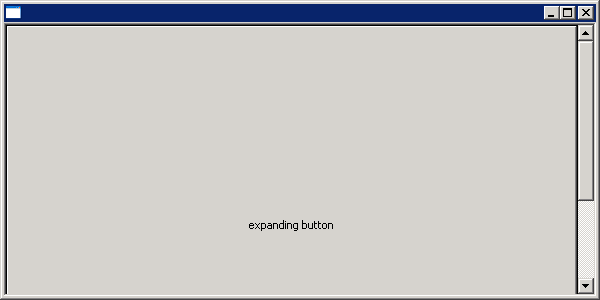
/*******************************************************************************
* Copyright (c) 2000, 2004 IBM Corporation and others.
* All rights reserved. This program and the accompanying materials
* are made available under the terms of the Eclipse Public License v1.0
* which accompanies this distribution, and is available at
* http://www.eclipse.org/legal/epl-v10.html
*
* Contributors:
* IBM Corporation - initial API and implementation
*******************************************************************************/
//package org.eclipse.swt.snippets;
/*
* ScrolledComposite example snippet: scroll a control in a scrolled composite
*
* For a list of all SWT example snippets see
* http://www.eclipse.org/swt/snippets/
*/
import org.eclipse.swt.SWT;
import org.eclipse.swt.custom.ScrolledComposite;
import org.eclipse.swt.layout.FillLayout;
import org.eclipse.swt.widgets.Button;
import org.eclipse.swt.widgets.Display;
import org.eclipse.swt.widgets.Shell;
public class ScrollBarAuto {
public static void main(String[] args) {
Display display = new Display();
Shell shell = new Shell(display);
shell.setLayout(new FillLayout());
// this button has a minimum size of 400 x 400. If the window is resized to be big
// enough to show more than 400 x 400, the button will grow in size. If the window
// is made too small to show 400 x 400, scrollbars will appear.
ScrolledComposite c2 = new ScrolledComposite(shell, SWT.BORDER | SWT.H_SCROLL | SWT.V_SCROLL);
Button b2 = new Button(c2, SWT.PUSH);
b2.setText("expanding button");
c2.setContent(b2);
c2.setExpandHorizontal(true);
c2.setExpandVertical(true);
c2.setMinWidth(400);
c2.setMinHeight(400);
shell.setSize(600, 300);
shell.open();
while (!shell.isDisposed()) {
if (!display.readAndDispatch())
display.sleep();
}
display.dispose();
}
}